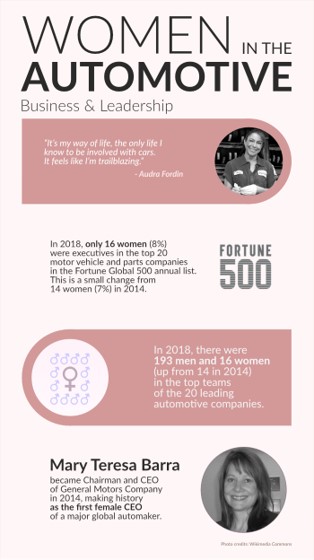Many women may not say it out loud, but they can feel uncomfortable going to the mechanic alone, especially if they are not familiar with cars. Their main fear? Being overcharged for services.
One entrepreneur-minded woman who had enough of this was Patrice Banks. In 2017, the Philadelphia native took charge and started her own mechanic shop – Girls Auto Clinic – especially geared towards women (according to the U.S Bureau of Labor Statistics, fewer than 10% of auto mechanics are female). The child-friendly auto shop is run by her, staffs mostly women and tailors all services around the needs of women.
Ms. Banks admits the idea came to her when she couldn’t find a female mechanic, so she simply decided to become one herself. The auto shop also offers free seminars in which women specifically can learn how to take care of their vehicles, how to talk to a mechanic and what to do in case of an emergency.
Additionally on top of the paid services they provide, Banks and her staff offer free monthly workshops for the public. Anyone can bring their car to the garage and learn how to check and maintain their vehicles free of charge. This is top-class customer service most businesses could emulate.
Ms. Banks believes the big disconnect between women and their cars is the actual lack of women working in the industry itself. She’s not just referring to mechanics but to the entire automotive process – from concept, to design and manufacturing to sales and repair. It’s time for a change.
Seems that the concept’s spreading. An ocean away in Norfolk, England, Caroline Lake has also been inspired to encourage young women to take a second look at their rusty cars. She founded Caroline’s Garage, which promises honest service to both men and women. They offer introductory classes for women in basic car maintenance and she frequently speaks in schools and encourages young girls to join the male-dominated profession. She hopes to someday have garages across the country where women can train.
 When you step back and look at it, Caroline is a true ambassador for women wanting to take a stab at mechanics. She believes it’s not about brute strength because there is a tool for every job. She confesses that women have some positive natural attributes like dexterity and patience, which make them ideal for these kinds of tasks.
When you step back and look at it, Caroline is a true ambassador for women wanting to take a stab at mechanics. She believes it’s not about brute strength because there is a tool for every job. She confesses that women have some positive natural attributes like dexterity and patience, which make them ideal for these kinds of tasks.
One fine example of a successful woman who has broken the glass ceiling in the auto industry is Mary Barra, the chairman and CEO of General Motors Company (GM). In 2013, in an industry dominated by men, she cracked the window to advancement for women. According to an article written for Forbes, More Women Cracking The Auto Industry’s Glass Ceiling With Skills, Thick Skin, what set Mary apart was not only that she knew the industry inside and out but that she was able to handle her own inner workings, so to speak. She was not only direct but warm, empathetic and confident, making her a trustworthy leader. For any industry wanting to modernize its image, these are very welcome attributes from a strong female leader.
Rise Of Inclusive Work Culture According to Deloitte Review research, diversity and inclusion can provide better business outcomes for most organizations. Companies that have inclusive cultures for both genders and all races are:
- 2x as likely to meet or exceed financial targets
- 3x as likely to be high performing
- 6x more likely to be innovative
- 8x more likely to be achieve success.
Simply put, women and people from diverse backgrounds bring different ideas and perspectives to the table, pushing the boundaries of creativity and effectively increasing profits. What’s not to love?
With more and more women graduating from top universities all across the globe, there is no reason why this glaring gender imbalance should exist in the automotive industry.
The examples used in this written piece show that women want to get involved and more importantly, have the skills and know-how to drive organizational changes forward.
Photo credit: Jill Wellington
Infographic credit: Sarah Ghanem

